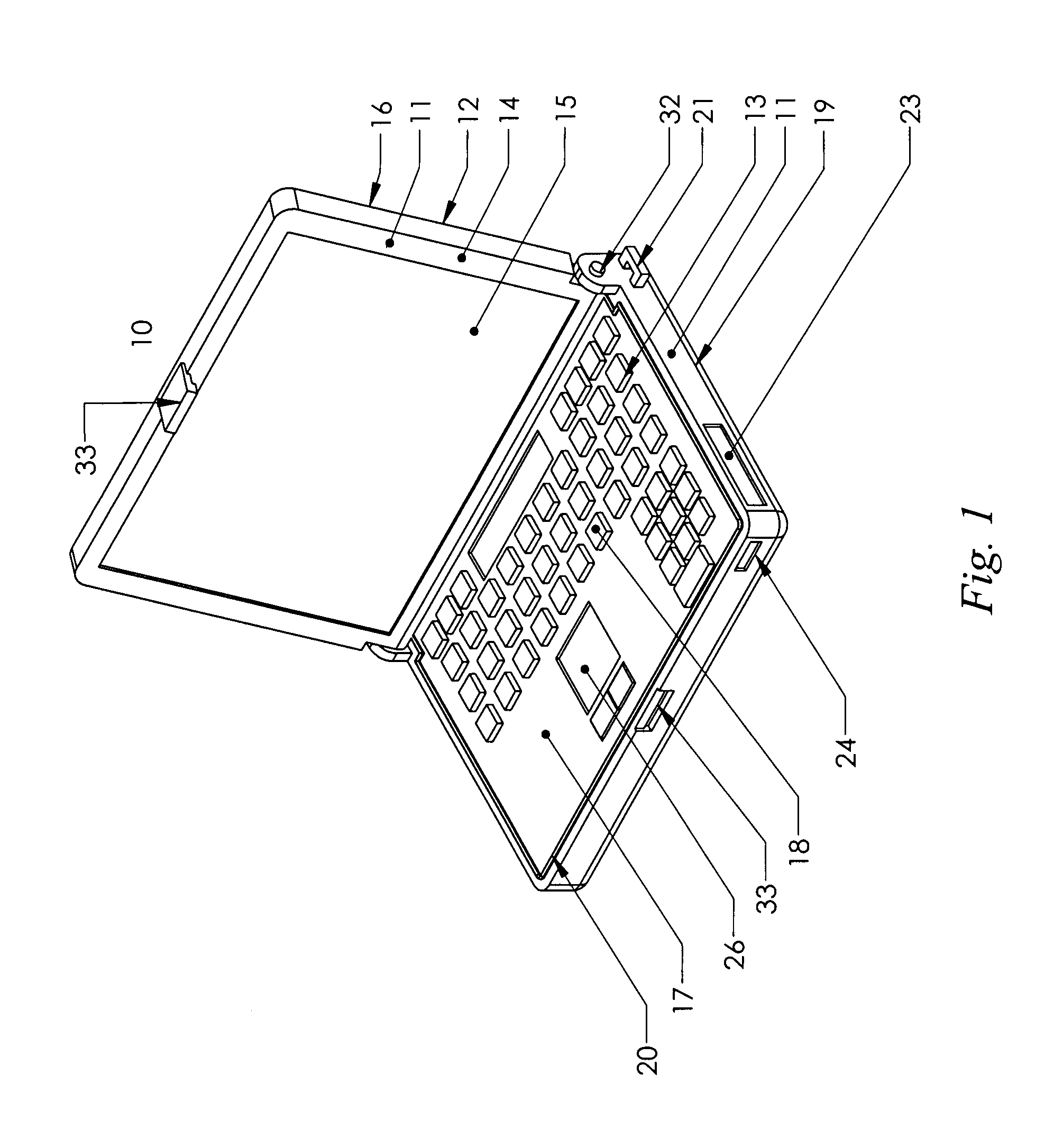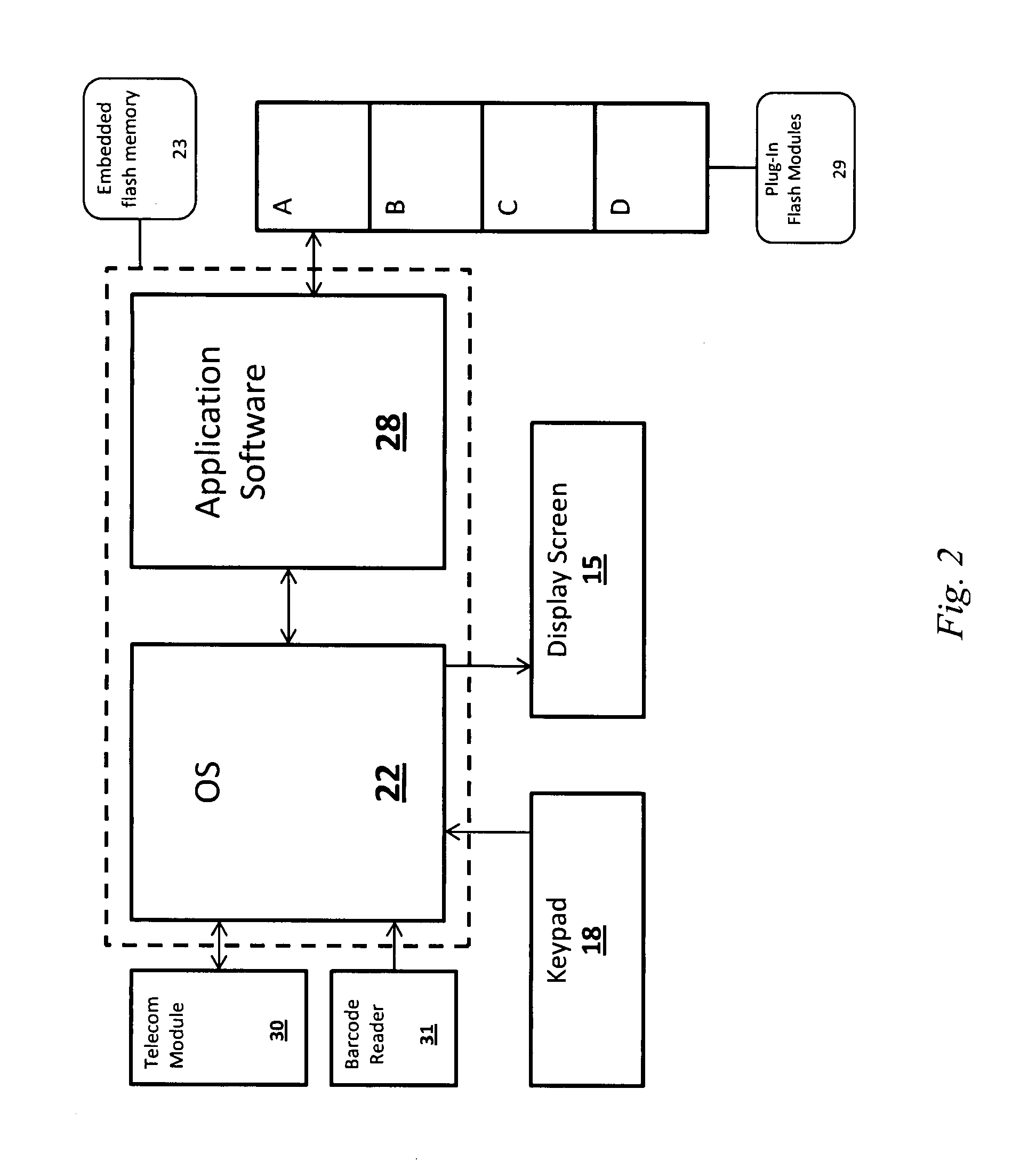Handheld computer for emergency responders
a technology for emergency responders and computers, applied in the field of hand-held computers, can solve the problems of limiting the utility of such software systems at the scene, affecting the reliability of general purpose personal computers, and affecting the operation of portable computers
- Summary
- Abstract
- Description
- Claims
- Application Information
AI Technical Summary
Benefits of technology
Problems solved by technology
Method used
Image
Examples
Embodiment Construction
[0043]Referring to FIG. 1, the preferred embodiment of the present invention 10 has a compact notebook configuration, comprising two panels 11 attached together by a hinge 32. The two panels 11 consist of a display panel 12 hingeably attached to a keyboard panel 13. When the notebook is open, the keyboard panel 13 is oriented horizontally and the display panel 12 is oriented vertically. The display panel 12 has an obverse face 14 containing a display screen 15 and a reverse face 16 consisting of a hardened shell of durable, corrosion-resistant plastic. The keyboard panel 13 has an obverse face 17 containing a keypad 18 and a reverse face 19 consisting of a hardened shell of durable, corrosion-resistant plastic. A resilient sealing strip 20 is provided along the periphery of the obverse face 17 of the keyboard panel 13, such that when the panels 11 are closed together the sealing strip 20 forms a secure, continuous seal that protects the obverse faces 1417 of both panels 11 from expo...
PUM
 Login to View More
Login to View More Abstract
Description
Claims
Application Information
 Login to View More
Login to View More - R&D
- Intellectual Property
- Life Sciences
- Materials
- Tech Scout
- Unparalleled Data Quality
- Higher Quality Content
- 60% Fewer Hallucinations
Browse by: Latest US Patents, China's latest patents, Technical Efficacy Thesaurus, Application Domain, Technology Topic, Popular Technical Reports.
© 2025 PatSnap. All rights reserved.Legal|Privacy policy|Modern Slavery Act Transparency Statement|Sitemap|About US| Contact US: help@patsnap.com



